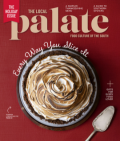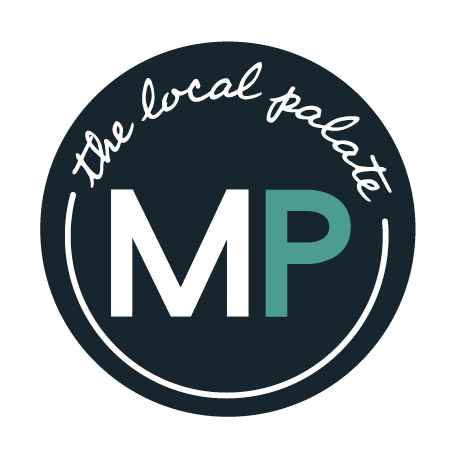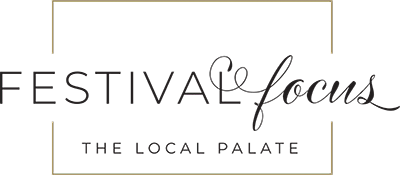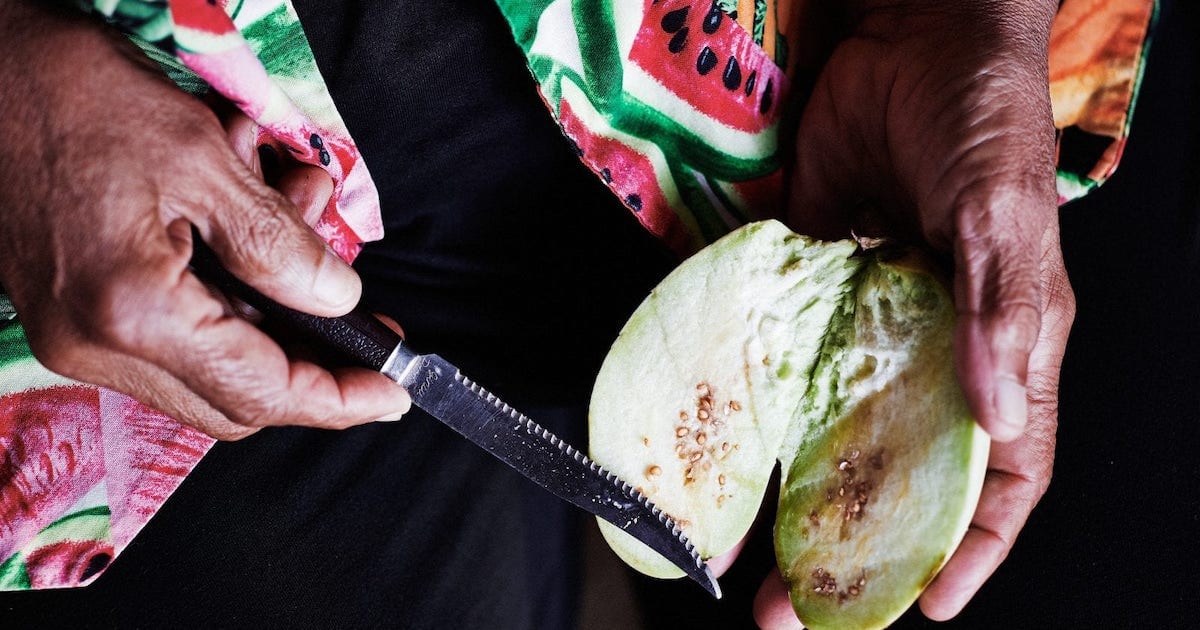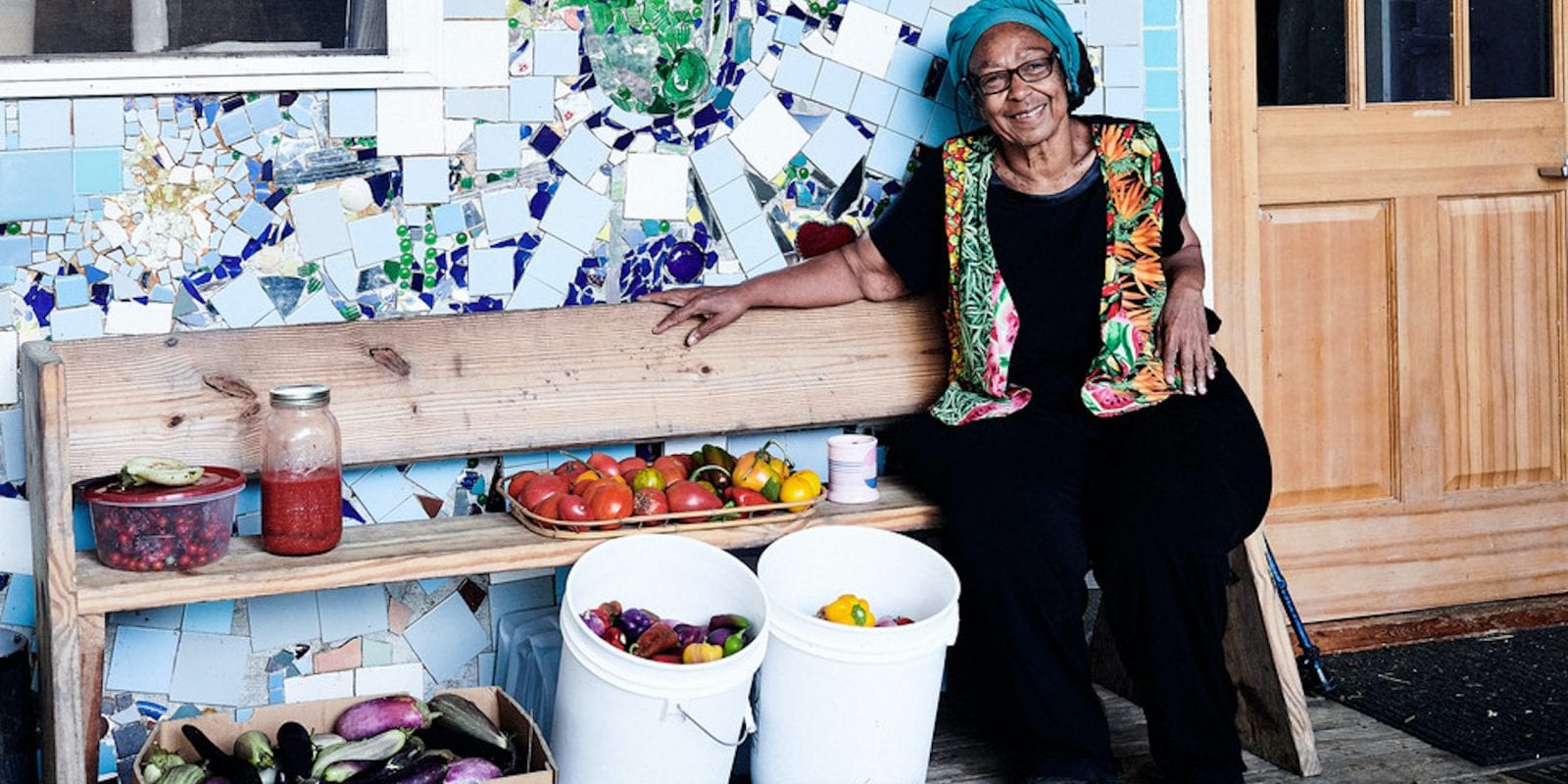
Gardener, seed saver, author, speaker, visionary:
IRA WALLACE IS ALWAYS READY FOR HER NEXT PROJECT
Ira Wallace is a woman of ideas. For the past seventy years they’ve carried her, from Florida to Canada to Virginia, on a breeze of inspiration—cooperative businesses that sustain the intentional communities where she lives, articles and books that share her vast knowledge of gardening and seed saving. They come to her like visions, and she follows them until she lands on her next project, whether it’s a food festival on the grounds of Thomas Jefferson’s Monticello or a research grant to investigate crops associated with the African diaspora.
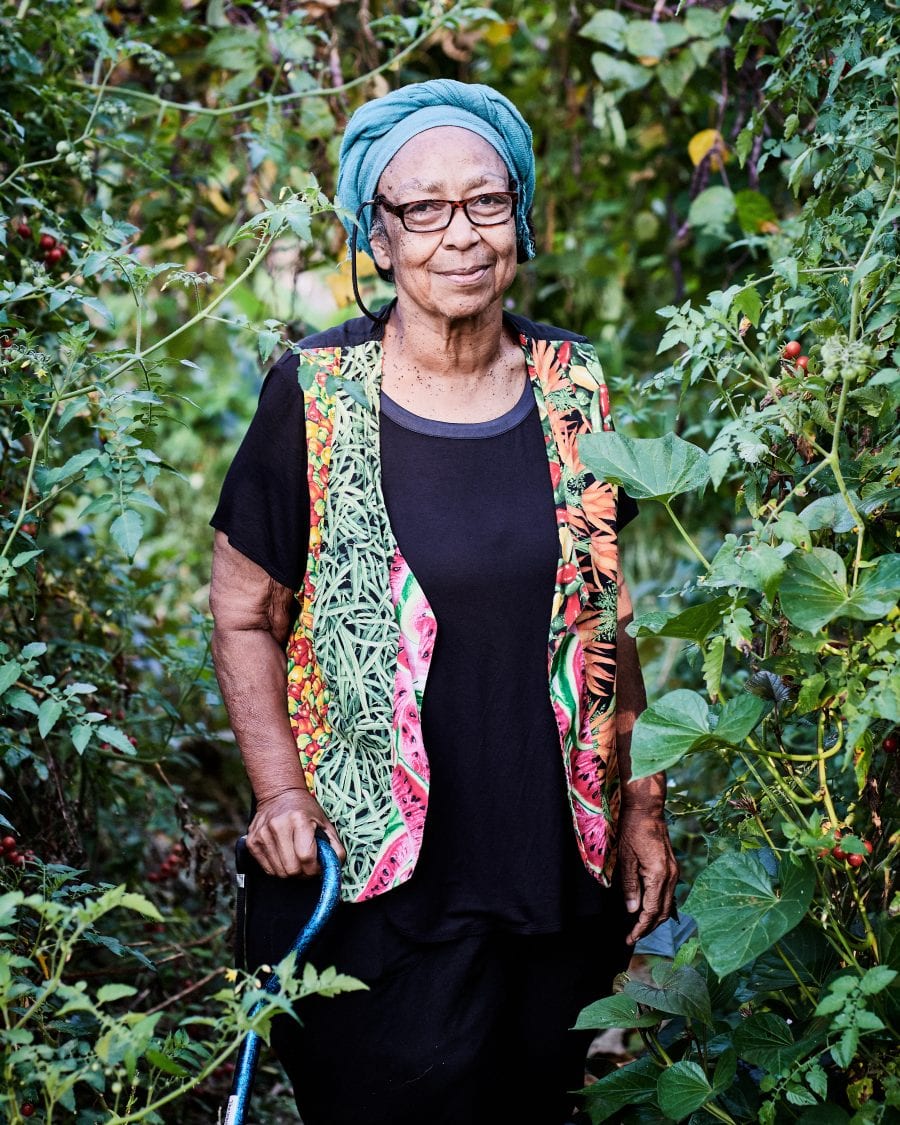
I first met her at an heirloom tomato tasting, a miniature version of the ones she hosts each year. She was sitting behind a table upon which bowls of freshly cut tomatoes are spread from end to end, a kaleidoscope of bright oranges, ruby reds, and faint yellows in little glass dishes, with Dixie cups of toothpicks dotting the tablecloth. Her smile stealing quickly over her lips like a secret joke had been told, she radiated warmth as she guided the small audience through her favorite samples.
Author of The Timber Press Guide to Vegetable Gardening in the Southeast (Workman, 2013), Wallace is revered in the seed-saving community. She sits on numerous boards and speaks on gardening and seed saving wherever devotees gather. Also the co-founder of Acorn—a cooperative agrarian community in Mineral, Virginia, where she lives—Wallace’s life is marked by occasions when she created something from nothing.
These tastings, I later learn, are hallmarks of the work done by the Southern Exposure Seed Exchange, the business operated by Acorn’s residents, Wallace the most recognized among them. They’re a kind of gateway activity Southern Exposure uses for spreading the message of seed saving—the practice of preserving seeds for practical use and posterity. It’s important work, a kind of agricultural genealogy that connects farmers and gardeners over many generations.
The seed exchange grows, collects, processes, and sells seeds of more than seven hundred species of plants, including many heirloom varieties, and maintains a seed bank of more than twice that many varieties. It wasn’t the first enterprise Acorn’s residents attempted. There was telecommuting, crafting, and farming; but Southern Exposure, which the community purchased from founder Jeff McCormick in 1999, was the business that stuck, largely due to the networking that Wallace did in the early years, making connections with organizations such as the Seed Savers Exchange, one of the oldest and largest nongovernmental seed banks in the United States, attracting the attention of celebrities including Martha Stewart and Steve Bender—Southern Living’s “Grumpy Gardener,”—and writing articles for publications like Mother Jones.

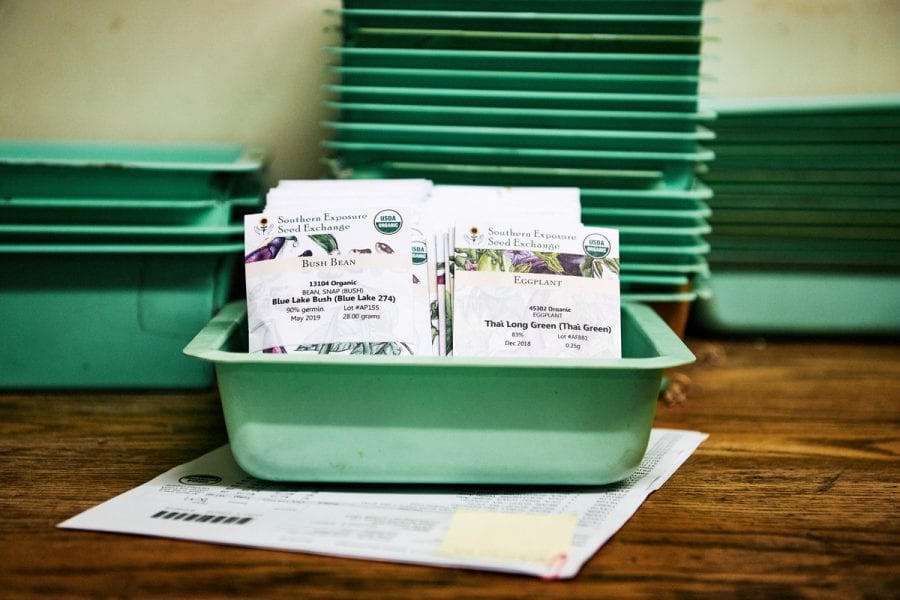
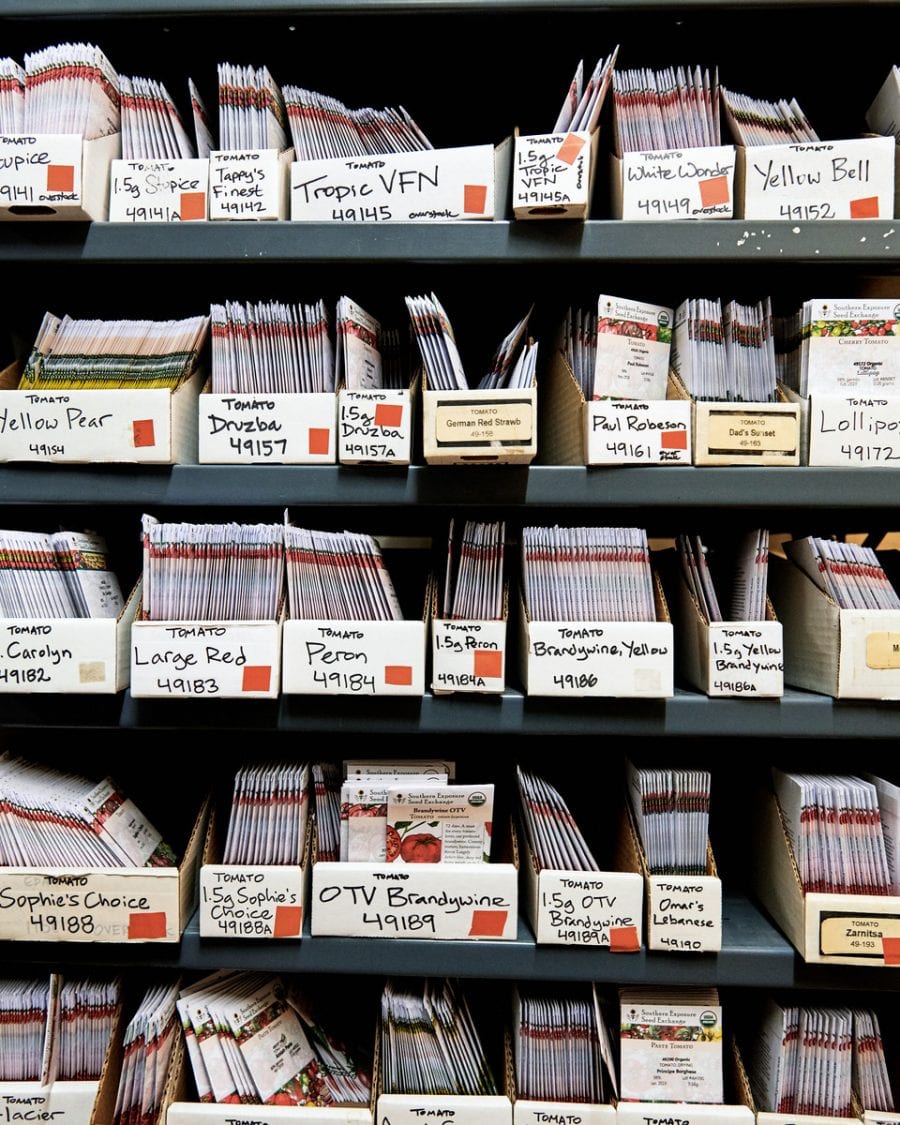
Gardening has been a part of Wallace’s life as far back as she can remember. She recalls her grandmother’s garden in Tampa with its rows of black-eyed peas and fruit trees. After her mother passed away at an early age, Wallace’s grandmother, Stella Brown, known affectionately as Big Sister, raised her and her cousin, reading to them from the encyclopedia and teaching them how to care for people as she did. Wallace says it was Big Sister who taught her to love gardening and cooking and who once told her, “Luck is preparation and opportunity meeting,” a lesson she quotes often.
Preparation met opportunity in 2007 when Wallace visited Gary Ibsen’s now defunct TomatoFest in Caramel, California. The sprawling celebration of heirloom tomatoes planted a kernel of inspiration for a seed-saving festival of her own, one Southern Exposure would model after Ibsen’s, right down to the tables stacked with more than three hundred varieties of heirlooms in little glass dishes. For a venue, she set her sights on Monticello, the historic home and plantation of Thomas Jefferson. She knocked on doors and drew on her connections in the farming and seed-saving communities, eventually convincing Monticello to host her Heritage Harvest Festival.
But she still needed an underwriter. For that, she turned to the newly opened Whole Foods in Charlottesville. Her pitch: to make a giant leap in public consciousness about the seed-saving movement. Her powers of persuasion paid off. That year, Wallace expected five hundred visitors. When one thousand showed up, she knew she was onto something big.
This past summer, the thirteenth Heritage Harvest Festival welcomed five thousand visitors to Monticello for a balmy Saturday sampling heirloom vegetables and listening to experts—including keynote speaker and co-chair Alice Waters—talk about connecting the roots of the past to the seeds of the future. Waters has long championed seed-keeping. “It matters to me because of taste and because the biodiversity is critical for the planet,” she says. “We will need that biodiversity to save us.”
Biodiversity is always in the back of Wallace’s mind. After plumbing the depths of tomato diversity for many years, Wallace has landed on a new crop—collard greens, a vegetable with surprisingly vast variations. Southern Exposure sells eleven of them: from the hearty Green Glaze, with its smooth, brightly colored leaves, to the rich and mustardy-tasting William Alexander Heading Collards, grown by 80-year-old William Alexander, who carried on the seeds passed down from his farming father.
“When we started this project, people weren’t thinking about collards, and they still aren’t really,” Wallace laughs, “but some of those varieties—just because we’ve been talking about them—other companies have increased their offerings to include them.” When I ask about the variations, there is a spark in her eye. She describes a spectrum of greens with crinkly and shiny leaves, little cabbage heads, and a range of unique flavors. “Especially for Southern chefs, it goes along with the local, seasonal thing to look at the different variations.”
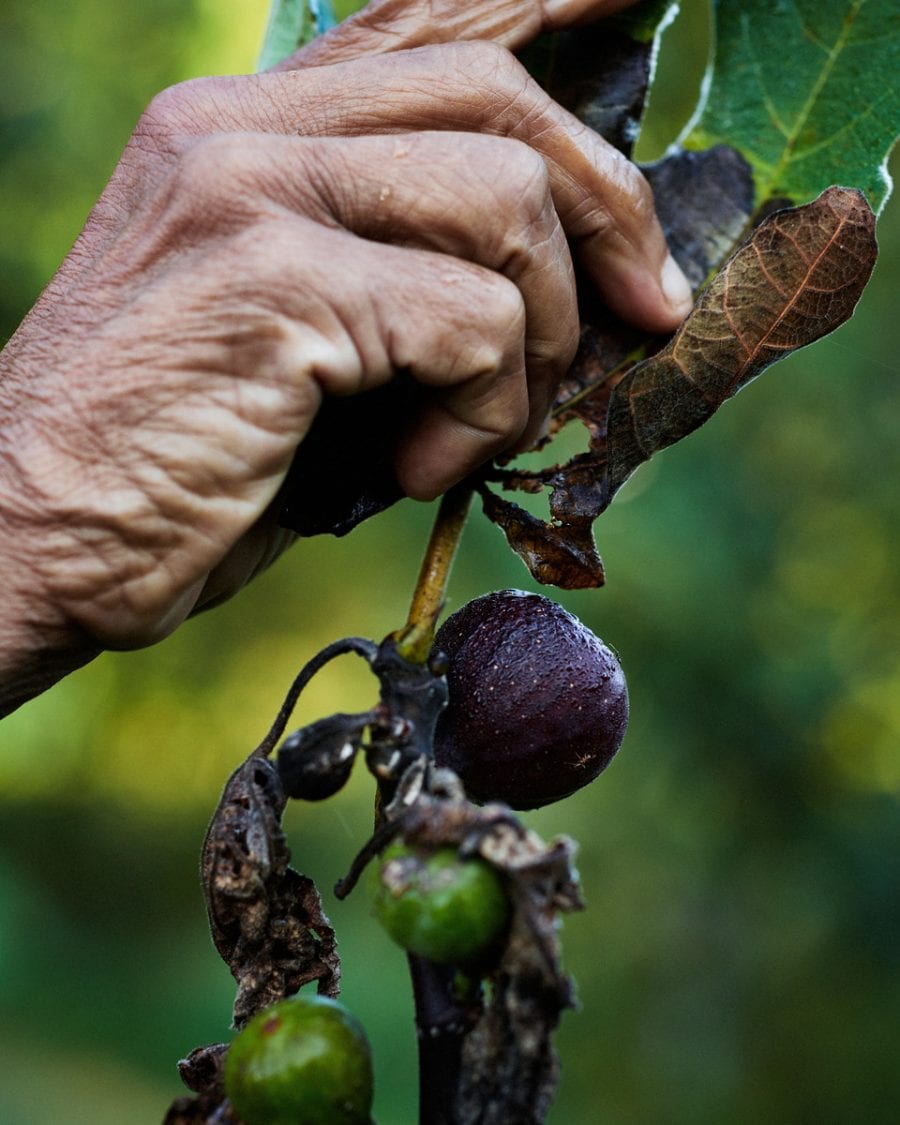
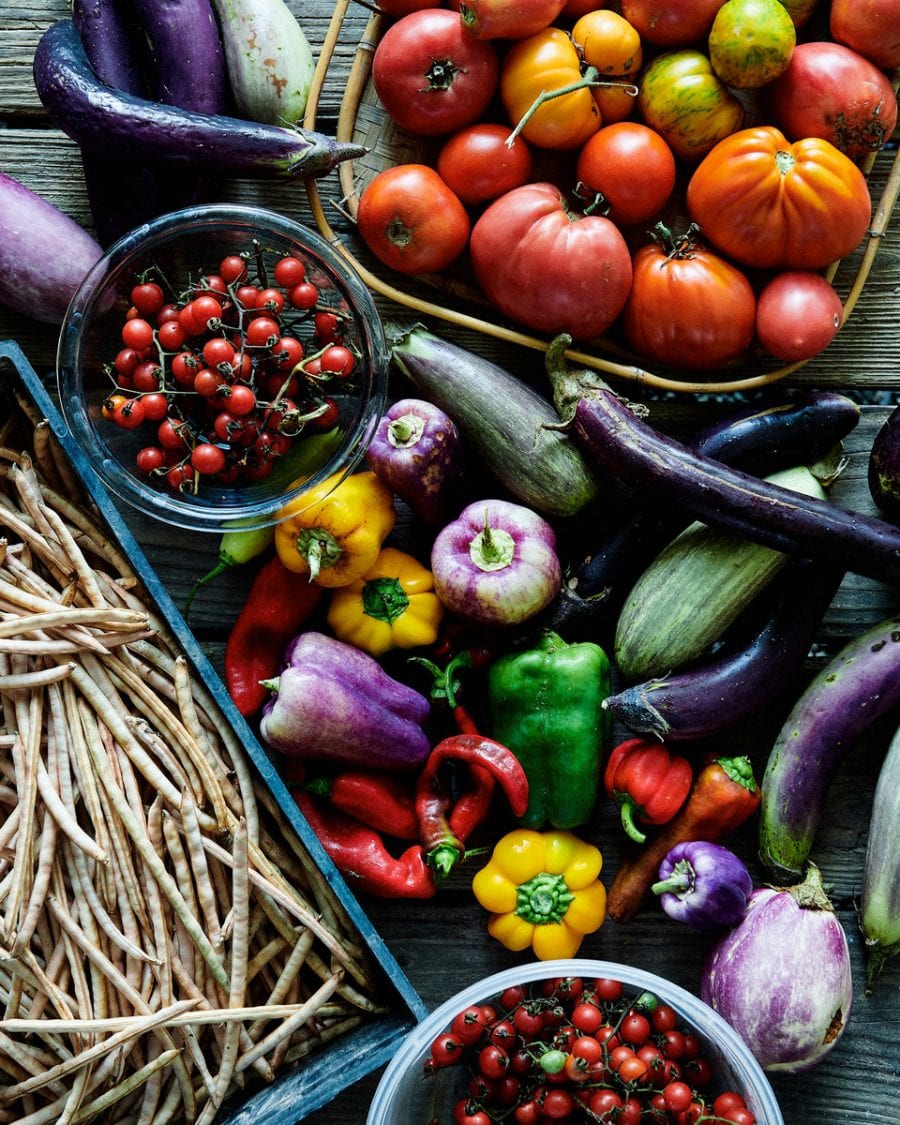
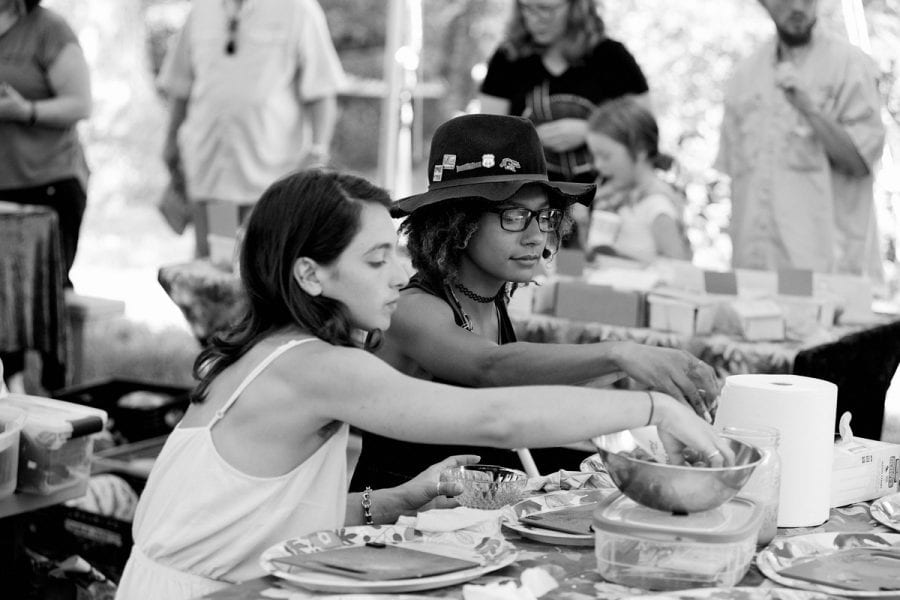
Seed-saving can be a hard sell to farmers, who already have an unforgiving workload. Saving sweet potato slips, for example, requires cleaning and cutting mature sweet potatoes, soaking the potatoes in water in a warm place for a week, and then twisting off the leafy root clusters from the potatoes by hand. These are the “seeds” of future sweet potato plants. Other crops, like peppers, are easier: Remove the seeds and allow to dry in a warm, arid location for several days. These seeds can be saved in plastic bags or glass jars for months, if not years.
“One of our best growers who produces our sweet potato slips—I talked to him for four or five years, and he thought, ‘Oh that’s nice, but how’s that going to work if farmers aren’t already doing this?’ And I said, ‘You know, before 1950, farmers were doing this.’” Wallace talked him through it. “The reasons that seed saving fell out of the regular farm routine had to do with the shift from rural to urban, the discontinuity in farm families. It wasn’t that it couldn’t work,” she explains. The farm bureaus and the cooperative extensions were encouraging growers to go big or get out of the game. The research around this time centered on hybrids and GMOs. “It wasn’t that people were being told lies; they were being told only part of the truth.” Wallace and Southern Exposure are trying to share the whole story so that farmers and gardeners can make educated decisions about what’s best for them.
Over the years, Wallace’s seed-saving work has met obstacles, including pressure from companies who own patents for seeds. In 2011, Southern Exposure was one of 73 plaintiffs in a lawsuit against Monsanto, the biotech company responsible for creating pesticides such as RoundUp. The suit alleged that Monsanto’s seed patents were a disservice to society. Ultimately, the case was dismissed in circuit court, and subsequently, Bayer acquired the company as part of its crop sciences division. “If you accept that life forms can be patented, which hadn’t happened until the 1980s, then they win,” Wallace says, reflecting on the case’s impact. “Various other people are suing them now and winning pretty big awards. It might be that enough successful lawsuits will change something.”
For Wallace, both community living and seed saving connect to a sense of interdependence that she values. “If you’re going to have all the things you want, you have to work with other people. Seed saving is a poster child of interdependence and how that can work well,” says Wallace. “It’s an everyday act of resistance. If you feel like you don’t want corporate giants to control the world, then becoming a little company that could is a way to fight back and a way to tell people that you can work at things at a scale. And maybe, if you work with friends, you don’t have to know everything.”
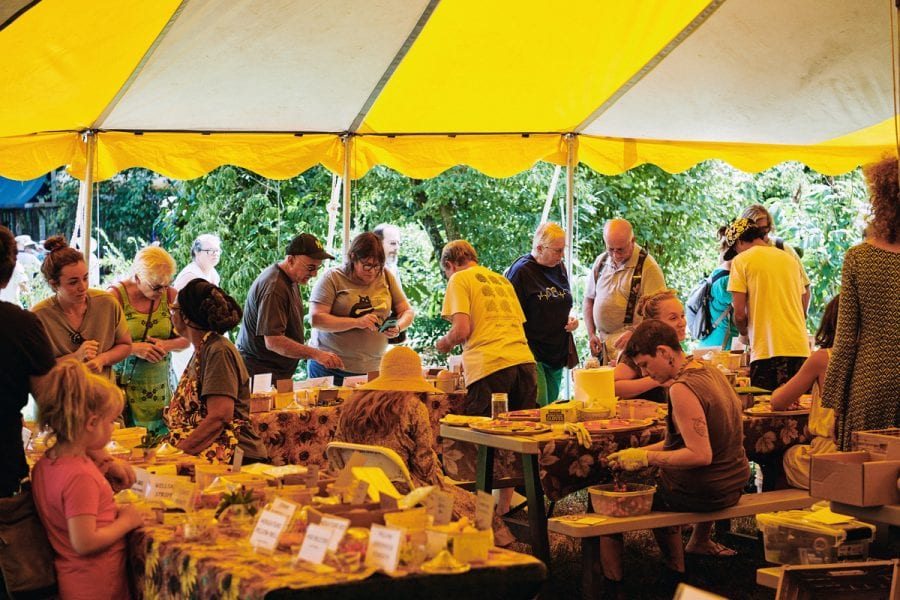
From the gardens at Acorn, Wallace practices her own form of resistance. She guides me through a row in the garden, pointing with her cane to crops that represent her most recent work—a gathering of seeds related to the African diaspora. She snaps off a cluster of celosia leaves and instructs me to take a bite, and suddenly a common garden plant I’ve seen countless times takes on new significance, tasting like a mixture of spinach and okra. I didn’t even know the purple-veined, deep green leaves were edible. “Enslaved people came from a tradition of eating dark, leafy greens, and that was something that actually contributed to the health and welfare of all Southerners, but it’s not acknowledged,” Wallace says. This project recognizes that agricultural and cultural impact.

From the gardens at Acorn, Wallace practices her own form of resistance. She guides me through a row in the garden, pointing with her cane to crops that represent her most recent work—a gathering of seeds related to the African diaspora. She snaps off a cluster of celosia leaves and instructs me to take a bite, and suddenly a common garden plant I’ve seen countless times takes on new significance, tasting like a mixture of spinach and okra. I didn’t even know the purple-veined, deep green leaves were edible. “Enslaved people came from a tradition of eating dark, leafy greens, and that was something that actually contributed to the health and welfare of all Southerners, but it’s not acknowledged,” Wallace says. This project recognizes that agricultural and cultural impact.
Wallace says that introducing crops like these requires educating consumers. Southern Exposure’s regular customers, hobbyist gardeners mostly, aren’t familiar with ingredients like roselle, the tart, pink calyxes of the hibiscus plant that are popular in Caribbean cooking. Some enthusiastic reinforcement is helpful: “I used to take roselle tea and jam to every event I went to so people could try it. You have to do that and also build up a coalition of other people who are interested who can promote and introduce
At 70, Wallace sees this as a legacy project to connect her work to her own roots. Attracted to the hippie movement of the sixties and intentional living for the past four decades, her own past and cultural history wasn’t something that captured her attention until recently. Wallace is introspective when she thinks about why this is the case: “I grew up being your well-behaved, smart black girl in desegregation, so I spent my whole young life desegregating things for people.”
When people ask her why she’s chosen to live in largely white communities for most of her life, she tells them that it was the times and circumstances that pushed her in that direction. She found support and encouragement in cooperative communities, many of which were the domain of upper middle-class white people at that time. Now, she’s become increasingly curious about communities operated by people of color, and she spent the last summer visiting them to see how they compare to places like Acorn. Inspired by the work of Leah Penniman and Soul Fire Farm—a BIPOC (black, indigenous, and people of color) community farm in Upstate New York—her latest project is a collection that honors seeds that have been historically grown by and represent a part of the story of food and farming for black and brown people across the African Diaspora.
“People joke, they say, ‘Ira is the queen of starting things.’ And I do, I love new projects. I like having something that doesn’t exist.” Wallace ponders as she surveys the historical gardens at Monticello, a site where she’s worked often over the last decade. She moves slowly on bad knees, gardener’s knees that have bent so many times on their hinges, they resist now with increasing frequency.
Driving home to Acorn after the trip to Monticello, Wallace floats an idea by me: a garlic festival. She asks what I think, if it would have appeal, and where it should be. We bat around a few ideas—a farmers market, a nearby farm—and then quiet falls over the car like a blanket. Ira is contemplative, looking out the window, deep in thought, a new project taking root in her imagination.
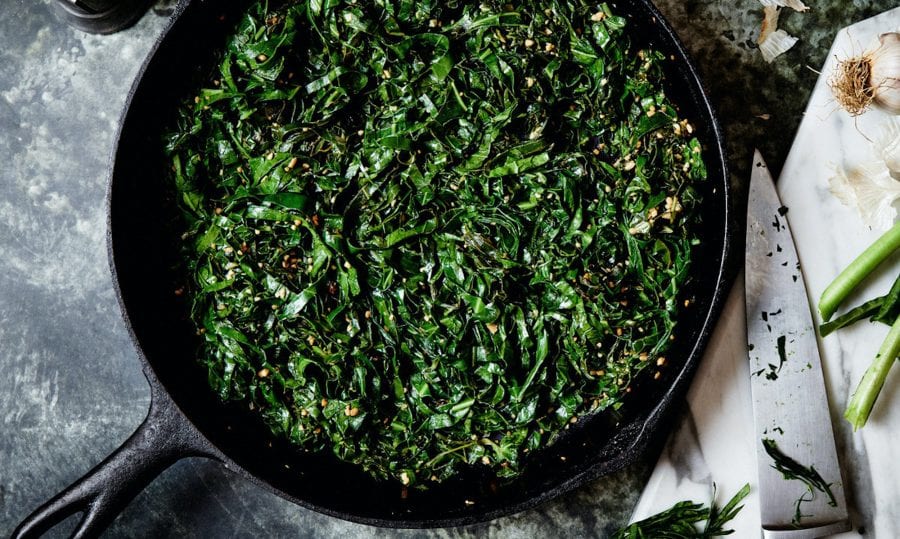
IRA’S GARLICKY COLLARDS
Wallace makes this with Alabama Blue Collards, but any young, tender collard leaves work well.
share
trending content
-
FINAL Vote for Your Favorite 2025 Southern Culinary Town
-
Get To Know Roanoke, Virginia
-
Shrimp and Grits: A History
by Erin Byers Murray -
New Myrtle Beach Restaurants Making Waves
-
FINAL VOTING for Your Favorite Southern Culinary Town
More From In the Field
-
5 Things in Kristen Kish’s Fridge
-
Protected: How to Eat Oysters
-
Protected: Embark On an Oyster Experience
-
Protected: 4 Oyster Nonprofits To Know
-
Protected: Why Does Oyster Farming Matter?
